Street Machine Summernats judges reveal what they look for in Australia’s top show cars
This article on elite-level judging was originally published in the June 2014 issue of Street Machine
NOTHING like this has happened before. In the lead-up to this year’s MotorEx, Australia’s car-judging royalty has set up the first-ever organised pow-wow with a group of the nation’s top car-builders. The mission? To get to the bottom of how judges come up with their scores, that can either make winners or shatter dreams in the Elite and Street Elite categories.
It’s 8.30am and we’re tucked in the back of an industrial block in Caringbah, NSW at the Protrans workshop – neutral ground. Meguiar’s MotorEx and Street Machine Summernats Chief Steward Owen Webb addresses the builders, his judging team standing behind him. Off to one side of the workshop is Terry Mourched’s Charger (SM, Mar ’14); near the roller-door is Steve Azzopardi’s XB Falcon (SM, Jun ’14) – fine examples of the Elite and Street Elite categories respectively.
“You guys probably hate us from time to time,” Webb says. “At the end of the day we know we won’t make everybody happy. What we want to try to do today is to make the judging process transparent.”
Webb explains that to start off, the builders will get a crash course in judging. Then they are going to run a little exercise: the judges will judge the Falcon and Charger as a group and so will the builders. At the end Webb will compare the results and answer any questions that may have arisen.
Street Machine is lucky enough to be the fly on the wall today so we can put together a guide to how the judging process works, along with some top tips to help you build better.
As midday rolls around, the builders and judges have finished assessing the cars. The results from both teams are close. The judges give the Charger 631; the builders, 575. As for the XB Falcon, the judges rate it 580; the builders give it 500.
“The builders were a lot more critical than we were,” Owen laughs. “Simon Bonello in particular is very tough on the panel and paint. He looks at not only the gutters and door jambs, but the door hinges too and expects the same quality of finish there. He buffs everything!”
“Today was very educational,” says Bonello, the owner of Ground Level Panel & Paint. “I’ve got a bit more of an idea of what they look at.”
“The biggest difference between the builders and the judges was that we tend to look mostly at the build quality of each little piece of the car,” says Glenn Coburn, of Exclusive Customs. “The judges obviously look at that too, but they are also looking at the overall impact of the car. They want to see a consistent plan and theme throughout the whole build. The upshot for us as builders is that we have to educate our customers who are interested in the elite show scene about how the judging is done.”
Let’s see where the current system has come from and how it works.
TICK-SHEET SYSTEM
Things were much simpler when it came to judging cars before the 1990s. That was the problem – it was too simple. The judge’s form was often basically a tick list. A bloke walked around your car with his clipboard going: ‘Tail-light lens good? Check. Panels good? Check. Fire extinguisher? Check.’
Meanwhile the quality of cars being built for shows was evolving, but the judging system wasn’t. The tick sheet couldn’t keep up with the advances in technology and in workmanship. To make matters worse, the tick sheet offered no real motivation for builders to take risks and think outside the square.
By the late 1980s, Webb and Summernats founder Chic Henry realised the old system wasn’t good enough. “Chic and I saw that people were building cars just to win trophies – they’d tick all these things and whoever got the most points won.
“So we moved to using a team of professional judges – guys like the late John Taverna – and came up with a new system.”
THE NEW SCHOOL
The old tick-sheet system meant almost anybody could call themselves a judge and mark off the checklist. Some judges were experienced car-builders; others may have simply been enthusiastic helpers. The new system of categories and weighted points requires judges with a professional understanding of car-building.
The current judging team (for both Summernats and MotorEx) has been handpicked by Webb and is made up of some of the industry’s most talented builders. Each is an expert in their own field of specialty, and based on this each is given one or more of the seven judging categories to preside over, while also having an overview of each car.
As the judges are all builders themselves, there is sometimes a situation where a judge has been involved in the build of one of the cars up for judging. That person is therefore not allowed to take part in the judging of that car, nor in any discussion of it.
POINT BY POINT
The current system has several judging categories with points allocated to each. In the Elite and Street Elite classes there are seven categories, with a total score out of 1000. The total possible points in each category are weighted to reflect how important each one is in the public mind.
Paintwork is deemed to have the biggest ‘wow factor’ and is judged out of 180 points. Bodywork is out of 170, as is Interior & Rear Compartment; Engine & Associated Components and Undercarriage & Driveline are both scored out of 140; while Overall Innovation and Impact & Display are each allocated 100 possible points.
“Body, paint and interior are the things people see,” says Webb. “A car could have the best undercarriage or best engine bay going, but if the public don’t see that they’ll think the judges have got it all wrong.”
The common criteria for all categories is degree of difficulty. “It is much more difficult to apply a urethane candy than a standard factory colour,” says Webb. “And it is a lot more work to fabricate a new dash, flat floors and headlining than to re-trim a factory interior. All that is rewarded with points.”
“Rob Godfrey is one guy that asked for our advice, and made it work for him,” says Owen. “The tonner was originally grey, so I suggested a brighter colour, which doesn’t matter so much for judging, but has an impact in People’s Choice. From there he planned it really well and put in masses of time on the detail”
THE JUDGING METHOD
The judging process at MotorEx starts before the show, when the build books arrive. During the show the judging team goes out together, and as they move from car to car, each judge assesses their specific category only.
The judges have their own individual techniques for judging, but all say they begin by standing back and taking the car in. They look at the stance and appreciate the overall impact. Then they’ll move in for the attack, which will normally mean they go straight to an area of the car they know is difficult. The sills and gutters are a typical first target.
“I break the car up into gaps, panel-fitting, straightness and innovation,” says Johnny Hristias, the judge for Paintwork and Bodywork. “So if I was going to start looking at this car,” he says, indicating Steve’s XB, “I open and close the doors. The first thing that I want to see is how the doors fit, because these cars weren’t very good out of the box. Have we improved the factory fit?”
Inside, the judges are looking to see if the basics are done right. Do the stitches and pleats on the squab seat line up with those on the backrest? Are the edges of the carpet finished off properly?
A last point on judging is the importance of consistency. “At Summernats we’ll get a car through at 10am on Thursday morning and we have to make sure that score is consistent with the car that comes through at 2pm on Friday afternoon,” says Owen. “We do that by going back and revisiting scores we made early in the process, to make sure we’ve kept the same standard. Then at the end, we’ll revisit the top cars as a group.”
BUILD BOOKS
A build book is vital if you’re building an Elite or Street Elite car. It’s a collection of photos and descriptions of all the difficult-to-do areas of your car that aren’t easily accessible. Also include what is unique to the car, how you’ve been innovative or anything else a judge may not be aware of in the limited time they have to judge your car.
“They are very important at this level,” says Webb. “For MotorEx in particular, months beforehand we invite them to send us a build book and then I send a copy to all the judges so they can look at that for two weeks before the event. They aren’t mandatory at Summernats, but they are a good idea.”
ELITE AND STREET ELITE
The elite (or Superstars as it’s known at MotorEx) and Street Elite categories are the top two levels of the Aussie car show world. Both categories require cars to have the highest standard of quality and finish. It’s in these categories that innovation and a high degree of difficulty is expected.
Mike Kluver’s Mustang (SM, Nov ’10), took out Street Elite at MotorEx 2010. It has innovation in spades, which ties into its Pro Touring theme. The interior, for example, has the feel of a Porsche GT3 RS, with a beautifully integrated and trimmed square-profile rollcage and harness set-up. Underneath is satin black
While both Elite and Street Elite are almost identical in the standards expected, there is one major difference. Street Elite cars do not need to have fully detailed undercarriages. These cars are driven, working machines and therefore the undercarriages will not be works of art, with the same quality paint as the outside. The whole point and spirit of the category is that these are genuine registered road cars. To ensure this, bonnet protrusions of more than 150mm and rims wider than 12 inches are now banned.
Mick Fabar’s ZERO’D (SM, Sept ’12) was an innovative car from the concept up – the goal was to build an elite car out of largely recycled materials and a nil carbon footprint. And from there it just gets better – fitting a 7.3-litre turbo-diesel V8 is one thing, but making it look this good is another!
Elite on the other hand requires fully detailed undercarriages. And if you can crank the engine that’s good enough, it doesn’t have to fire because these cars aren’t expected to be driven – they’re wild sculptures on wheels.
“Basically anything goes,” says Webb. “It’s automotive art. And that’s what we want to encourage.”
At the Elite and Street Elite level, innovation counts for a lot. “On the show scene, about 10 per cent of the guys are innovators, most people are followers,” says Owen Webb. “Adam Le Brese’s Falcon is a good example of an innovative car, with its cantilever front suspension that works with the the car’s race theme”
THE UPSHOT
What everyone agrees on is that you should first build a car you are happy with – building a car purely to win trophies is asking for trouble. But if you do want to build an Elite car, you need to be clear about what you are gunning for. If you want a genuinely street-driven car, Street Elite is the go. Familiarise yourself with how the judging system works and have it in mind as you are planning your build.
Another great example of an innovative car that follows a theme is Adam Barnes’s HARDHT (SM, Aug ’10). Inside, Adam struck a balance between the HT’s muscle-car roots and a high-quality modern interior. While it wasn’t built with shows in mind, the Monaro scored a spot in the Top 10 Elite at Summernats 23
“Too many guys put a heap of money into their car, but at the end skimp on the paint,” says Glenn Coburn. “They put in a 700hp engine when they are building something that doesn’t need it. If they stuck to 400hp, they’d have heaps of grunt and more money to put into panel and paint.
“But at the end of the day people need to realise that events like MotorEx only have a few winners. Think about the Ridler Award in the US: it is one trophy, winner takes all – just to make the eight finalists is amazing. MotorEx is similar, and people need to realise that, rather than coming to the show with the wrong expectations.”
WHAT NOT TO DO:
1. Rush it. The judges can spot a car that has been rushed a mile off. When you rush it you’re more inclined to miss important details. You will also not be able to spend the proper amount of time getting the difficult bits right.
2. Change your mind. As soon as you begin chopping and changing, the budget is going to blow out and you’ll end up with a car that won’t flow together properly.
3. Support group. Keep your friends and family under control. Don’t let them get you revved up.
4. Sob story. Everybody has a story behind their build; yours is not special.
5. Budget-boast. Judges aren’t interested in how much has been spent. They see the car for what it is.
THE JUDGES:
OWEN WEBB
ROLE: Chief Steward at Summernats and Chief Steward at MotorEx
AGE: 56
YEARS JUDGING: 26
OCCUPATION: Business Development Manager, MotorActive
JUDGING METHOD: I start by looking at a difficult area – say, the radiator support, the gutters and underneath the sills. If the detail and finish is good there, then you know that that car is probably going to be competitive and I’ll need to spend the time on it.
LOVES TO SEE: Innovation. It stops our industry being stagnant and innovation can be in any part of the car. I love to see people stepping outside the square and taking a risk.
HATES TO SEE: The person that has the story – and it’s never about the car. It’s: “Oh, this was really hard work,” or: “I‘ve been working for three nights without sleep.” I feel like saying: “It’s the same for everybody!”
TOP TIP: Read the criteria. But my biggest tip is build the car you want. And then if you win something with it, it’s a bonus. The fun is in having a car, not walking away with a trophy.

JOHNNY HRISTIAS
ROLE: Judge, Paintwork; Bodywork
AGE: 43
YEARS JUDGING: 15
OCCUPATION: National Training Manager, PPG
JUDING METHOD: I think the first thing I do is appreciate the car. Then we start to break it down and look at body, gaps, panel fit and straightness. So we’ll walk through the process of the car being built – have they thought about it from start to finish? Then we look at the paint; we look through the paint at the foundations. Is the design right, does the colour suit the car?
LOVES TO SEE: People that make some brave decisions about colour and take a big risk. The whole emotion of a car is created around the colour. It highlights the styling, it highlights the panels – everything you’ve done to that car is highlighted with the right type of paint.
HATES TO SEE: A real bugbear is when you can see they haven’t done enough trial-fitting of the car in the lead-up; they’ve left all the important things right to the end, rushed it.
TOP TIP: Have a plan of the build drawn up well in advance. Before you turn a spanner you need to have a drawing of the car, too.

LAURIE STARLING
ROLE: Judge, Engine & Associated Components; Undercarriage & Driveline
AGE: 29
YEARS JUDGING: 7
OCCUPATION: Owner/Fabricator, Chop Shop
JUDGING METHOD: Start with the stance. The stance is everything. How well do the wheels fit the body? Everything I’m looking at is inside and you don’t see, so basically the undercarriage is what we call the platform and if that’s wrong, everything on top of it will compound the problems. Then look at the marriage between the motor and the car – has it been well integrated? Is the position of the engine good for dynamics?
LOVES TO SEE: When I know something works and it’s finished. The motor’s going to run; it’s not going to hit on anything. I know that the customer has an asset and not a liability on their hands.
HATES TO SEE: Dirt! At a show like MotorEx, your car must be clean, including all the hard-to-get-to places. At Summernats, we allow for a bit of dust, as the cars have to be driven in.
TOP TIP: Plan. Put a diary next to your bed and a scrapbook. Try not to do things twice.

MATT GILKES
ROLE: Judge, Interior & Rear Compartment
AGE: 38
YEARS JUDGING: 12
OCCUPATION: Owner, Inside Rides.
JUDGING METHOD: Instead of trying to find defects, I look for the positive things. It might be some fabrication or some modification; it might be where someone has used their imagination in a different way than other people have, so it makes them stand out. I take imagination, innovation, customisation and workmanship all into consideration.
LOVES TO SEE: People using their imagination. I love seeing innovation and I love seeing people enjoying their car.
HATES TO SEE: Afterthoughts – you can always pick them. If you’re the builder you need to have a plan of attack. A lot of guys fall down in that area. I don’t like bad
panel gaps either – but at the same time I’ve never seen a car with a perfect interior.
TOP TIP: Express yourself through the car. Don’t pull out a magazine and say: ‘I want to build a car just like that.’ Build a car of that same quality, or better, but always try to use your own influence on the build of the car.

RONI TARABAY
ROLE: Judge, Paintwork; Bodywork
AGE: 34
YEARS JUDGING: 4
OCCUPATION: Owner, Winner’s Circle Refinishes
JUDGING METHOD: I guess the first thing I do is step back and look at gapping, then I’ll start getting to the details. And you can’t just judge the car as-is, you’ve got to compare it to the previous car; that’s how you really know how to score a car. You can’t take personal taste into it. You just have to judge it for what you see in front of you.
LOVES TO SEE: Paintwork that’s been finished off really well. Detail, no edges, all gloss – that’s what really drives me. I look forward to that. I like seeing people set new limits with colour and looks.
HATES TO SEE: Never try to cover up a fault, like a paint run or a chip, with a sticker or part of your display; it will just draw attention to it and we’ll see it straight away.
TOP TIP: Build a car for yourself and not for a trophy.
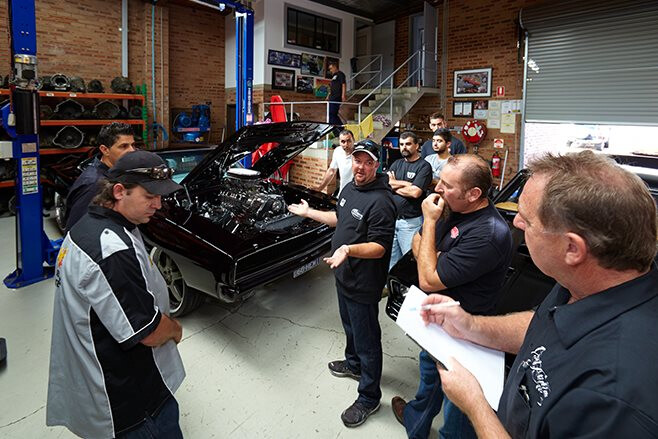
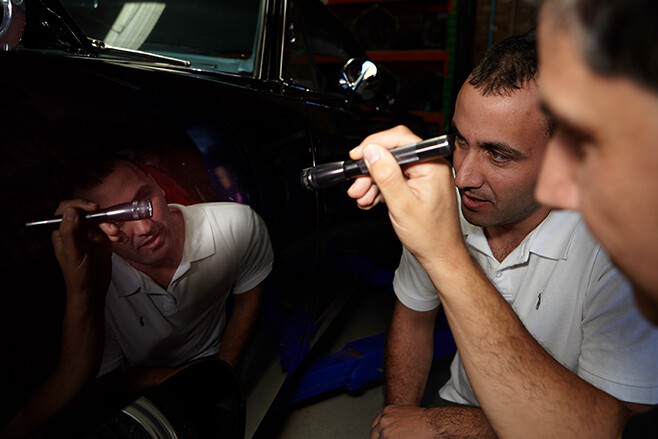
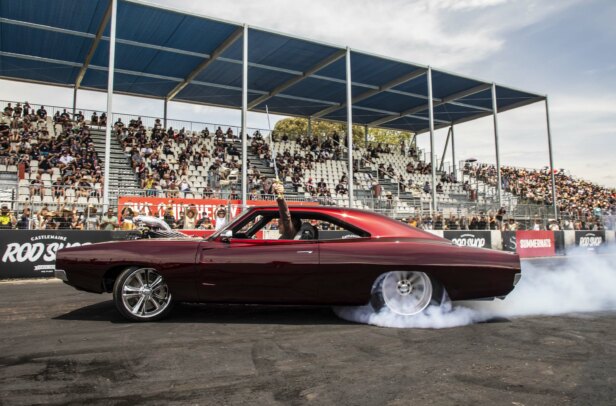
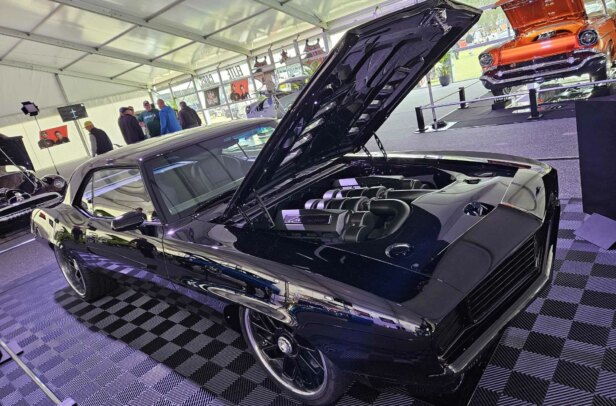
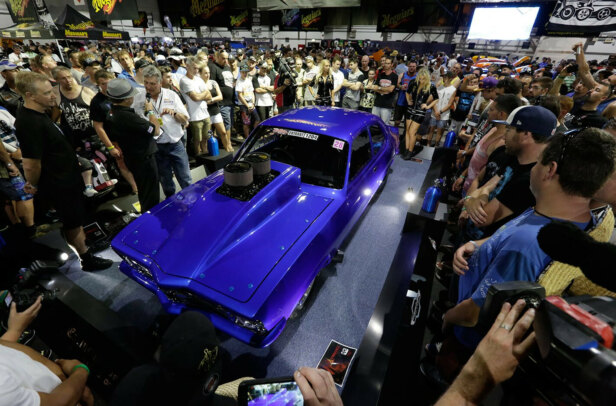
Comments